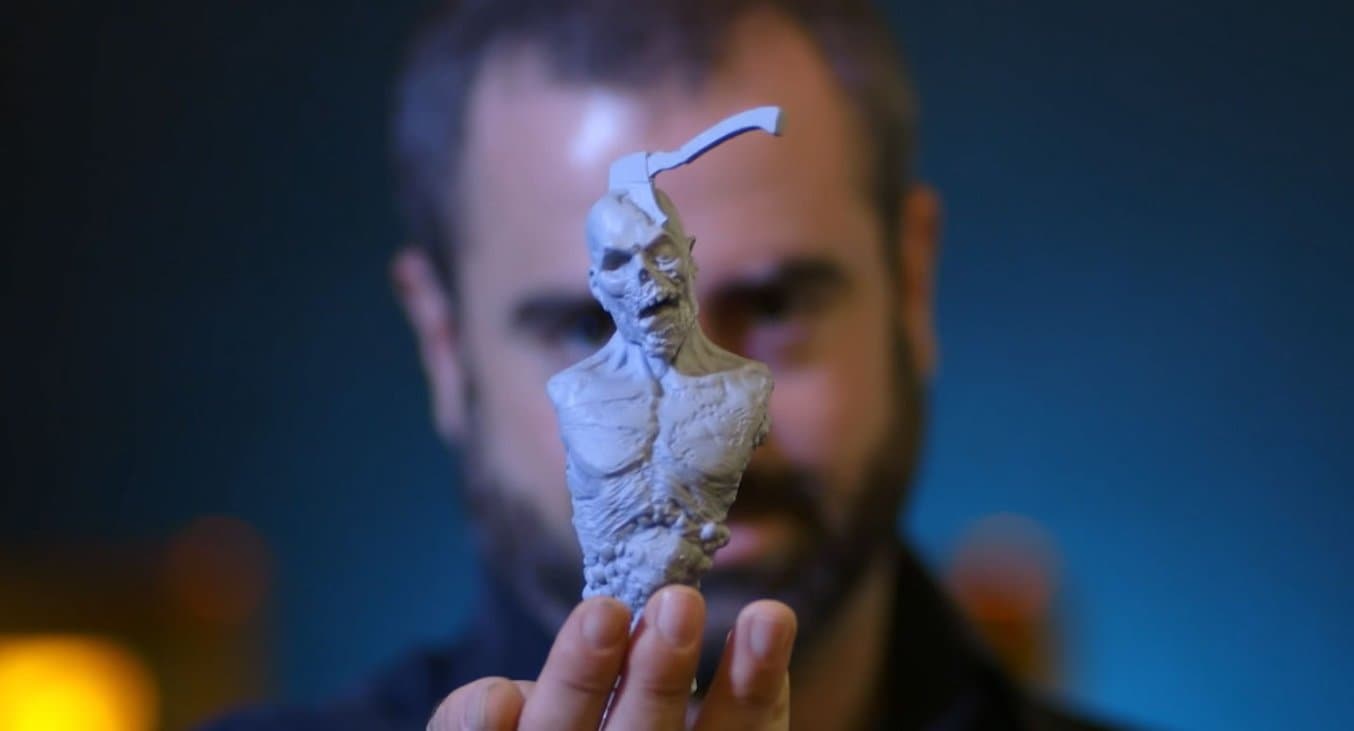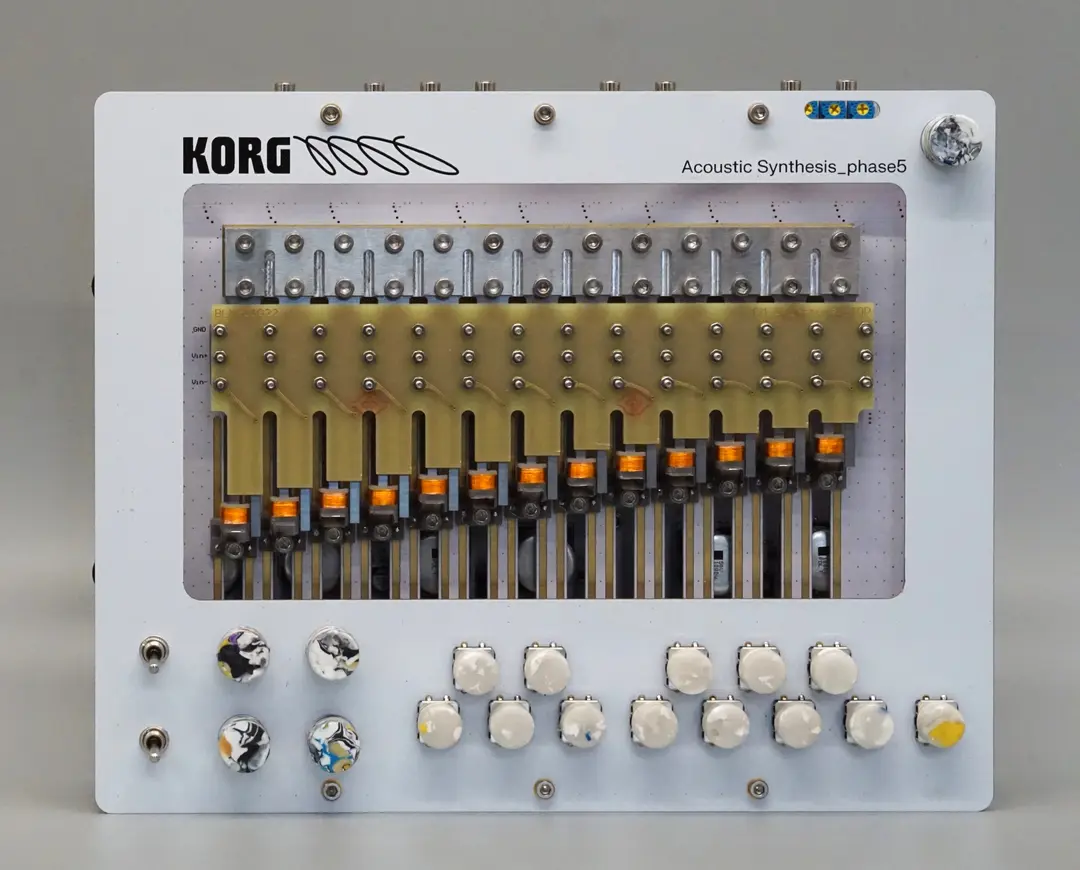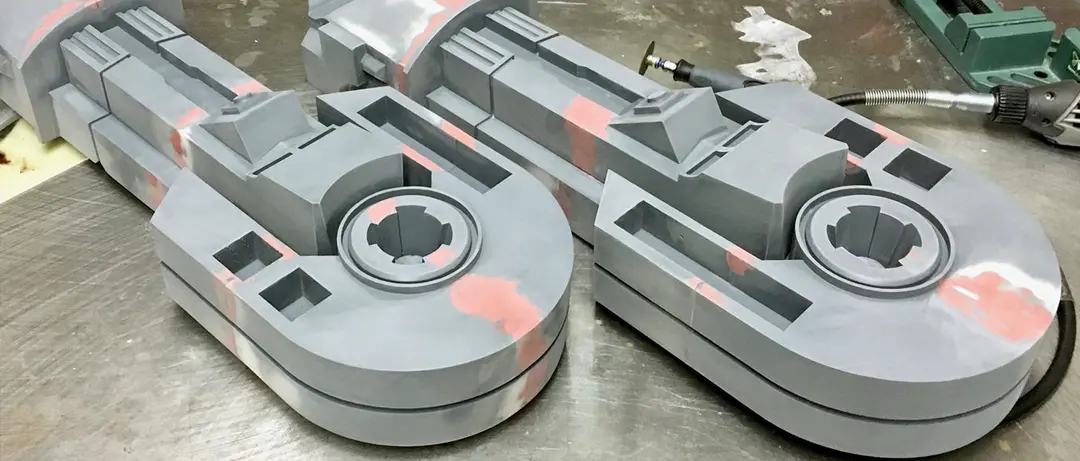
Jared Krichevsky first became interested in creature and character design during his year working in a bookstore. That was his “a-ha” moment: he was blown away by the level of detail, creativity, and dedication in the digital art books he found there, and it occurred to him then that the 3D software used to make these things could now be accessible to him, too.
“I didn't know it was going to turn into anything, but it definitely became a passion for me, and I didn't know how I was going to learn it, but I thought, I've got to do this.”
Krichevsky described his two years at the Gnomon School of Digital Effects in Hollywood as some of the hardest and most exhausting of his life, but they were rewarding, too. After he completed his education, he got an internship with Aaron Sims Creative (ASC), an up-and-coming visual effects (VFX) and design studio in Burbank, to work on the short film Archetype. From there, he landed a full-time job at the studio, where he’s had a chance to work on dream projects like Stranger Things, Teenage Mutant Ninja Turtles, and Ready Player One.
Last year, we visited Aaron Sims Creative to explore the sketch-to-screen process behind the Stranger Things season 1 Demogorgon monster. In this interview, we take a deeper look at Krichevsky’s day-to-day work at ASC (he has since moved on to freelance work), and how 3D printing and the Formlabs Form 2 3D printer help the studio facilitate collaboration, win over directors, and bring digital models to life.
Day to day, what does your involvement in projects look like, and how has that evolved over time?
My involvement is usually in the conceptual stage: figuring out what these creatures and characters look like and how are they going to move, how to imbue these characters with personality and character and history that makes them come alive on the screen.
I'm there at a very early stage in the process. Sometimes the script hasn't even been written yet, or sometimes there's only a very little information about what these things are, so we get to have a conversation about what needs to happen to make these characters come off the page.
It can be very mentally challenging, because you're like, I don't know what they want, and I'm not sure they know what they want, but we come together to come up with something that, in the end, I hope everybody is very pleased with.
The ideation stage, the creation stage, is the most fun part of the whole process. It's really cool when you see the characters come to life on the screen, it's a magic moment.
What does the ideation process usually look like?
When we first come into the ideation stage, it's often called blue sky or free range. You get to kind of do whatever you want. It starts with the conversation with Aaron [Sims] and our art director Steffen [Reichstadt], and the other artists in the room. We all get together and hash out ideas, we draw on references. We do a lot of research upfront, browsing the web and figuring out where these things are coming from. If it's mythological, what are the historical implications of that? How can we put these things into the real world as best we can?
Then, we begin with the thumbnailing stage. Sometimes it's just a napkin sketch or a doodle on a piece of notepaper, just to get out a starting point that we can all jump off of. What's great is some artists will go off in a completely different direction than you thought you were going to, and from there we just explore and come up with ideas.

After that, we jump into 3D with ZBrush and other 3D packages and start defining the look. We do digital sculpting here, so it's a lot of pushing and pulling of shapes and sculpting, bringing these characters to life. After that, we go through a rendering stage, where we light it and render it all in 3D, and we composite it together in 2D and Photoshop and then start painting on top. By the end, the end product is very highly realized.
What are some of the biggest challenges for you in your day-to-day work?
Making everybody happy is a challenge, because everybody has a different idea about what they want and I have my own ideas about what I want. We want to make sure that everybody's happy with their design at the end of the process, and that in the end the director knows exactly what they are getting on the screen and that they're happy with the process.
There is definitely a difference between physical and digital when collaborating on something. When you're doing a digital project, it's a file that you transfer over to somebody and then they pick it up, so when you pick it up again you may not really understand all the work that they've put into it until you see it and you open that file again.
Having a director hold a 3D print answers more questions for them. When they're looking at a flat image, sometimes it doesn't answer all the questions. When they hold a 3D print in their hands, it begins to form in their mind what their final product is going to look like. I've definitely seen directors hold a 3D print in their hand and go, “wow, this is it.”
At what other points during the process do you find yourself using 3D printing?
We really like to use [3D printing] at the last stage. We will use it as an iterative process as well, but mostly at the final moment when we see something. Then we like to print the model and really take a look at it, examine it. Sometimes we'll photograph the prints and put some nice studio lighting on them and admire the work from there.
We work through things with printing, but that last final print, where the design is set, is definitely a selling point for the producers and the directors. They can hold it in their hands and say, wow, this is our design and this is what it is going to look like.
We've had directors ask for prints that they actually bring on set and use to block out scenes, because oftentimes creatures and characters are fully digital now. They get to take a look at it and say, hey, this is what our character is going to look like in this scenario. A lot of times, the directors will take the prints with them and everybody wants one.

Aaron Sims Creative uses 3 Form 2 stereolithography 3D printers for rapid prototyping and demonstration models, a key step in their process for bringing creatures and characters to life.
Why do you think those physical parts resonate with people resonate in certain ways more than the digital?
There's separation between you and the screen. Sometimes when you're looking at a screen it is just a series of pixels, and even if you render it, even if you throw it in an HDRI or you throw it on set, it doesn't feel real. When you hold a print in your hand, you are looking at it, you are feeling the weight with your hands, you can feel the texture with your fingertips, the light is coming from the world, and it is all real.
There is something magical that happens when you are really holding a print and you get to examine it from all angles. Even prints that you've already printed out, you'll want to pick up again and hold them again and again because you're like, I made this.
Even though there's a separation on screen, when it's in your hands and it's real, it's really special.

With physical media, like working with clay, you kind of get one shot with it. If you drop it on the ground or if you break it, it's gone. With 3D printing, it's a digital asset, so we can print it again and again and again. If we break it or something happens we can always go back and print it again.
There are things you can do in 3D that you just can't do with physical media, not without creating a structure or a setup or something like that. With 3D modeling and 3D sculpting, you can push design to levels that you couldn't do in physical media, because it has physical limitations. With digital, there are no limitations.
What does your 3D printing process and workflow look like?
When we set up in a printer, usually we do a test print at a smaller scale, just to make sure everything's running fine. We examine it, post-cure it, and make sure everything's looking good. When we all feel that we're going to get the detail that we want, we push it to the actual scale of the final requested size.
Then it's all hands on deck, and we'll trade off on cleaning and trimming the supports and post-processing. When we take out a fresh print, everybody wants to look at it, everybody wants to surround themselves with it. Everyone gets to be a part of it, and they get to see the magic too. Everybody wants to crowd in and see, hey, how did they turn out? They always turn out amazing.

What about the process for a larger 3D printed assembly?
For a really large piece, a lot of conversations have to happen.
One, we have to figure out what the final scale is. We print out a sheet of paper with an image on it and we show that to the client and say, “it is going to be this big, are you sure you want that?”
We take the model, and reduce the file size, and scale that up to the final size. That way we can really examine potential problem areas, or we just do a spot check and make sure that everything's going to turn out okay in the end.
From there, we go into engineering. If it's a really, really large piece, we have to engineer these pieces to fit into the build volume. From there, it's a lot of conversations: do we break these pieces up into smaller pieces? What’s that going to look like? How do we hide the seams to make sure that when we glue it all together the seams aren't going to be obvious?
That's what great about the digital software. If you make a mistake, you can always go back. You can always double check and recheck things. We'll engineer something and break it up as best we can. Now that we have new ZBrush features, the seams just disappear, you don't even see them. It's pretty cool to see how it all comes together.
Read our tutorial on how to create models larger than your 3D printer’s build volume.
Which materials do you use with your Form 2?
We like to print everything in Clear Resin. The reason why is that translucency is the buzzword, everybody loves it, so we like to print everything translucent. That way we can wash layers of paint and color on the print and still keep a little bit of that see-through feeling in it.
Personally, I also love to print on the matte Grey Resin, because you see all the detail that comes out right away.
Based on your experience in the industry, where do you think 3D printing is going for this realm and what would you like to see happen?
I think the possibilities with 3D printing are endless and it's only going to get better. I think when people really realize the applications that it has, everybody's going to want one on their desktop. I think it's inevitable that everybody's going to have one, that digital libraries are going to grow online, and people are just going to be able to download whatever they want.
What's great for creators, for artists, is that if they're working digitally and they're doing a digital asset, they can put that online and anyone can have their product right away. I think it's inevitable that for creators and people that want creative works, that cap is going to close and everybody is going to be able to have something from their favorite artist. If you see something online that you like and are like, man, I want that, with a 3D printer you can have it in a very short amount of time.
Do you have nightmares with all these creatures?
No, I put all my nightmares on the screen.


